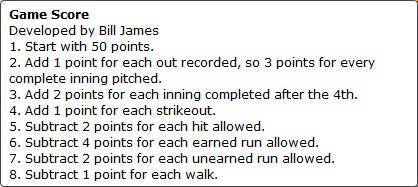Bill James’ creativity has absolutely nothing to do with tactics or battle strategies whatsoever. His thought process and achievements put him just about as far away as possible from the likes of Sun Tzu and Napoleon. The WAR that made Bill James famous has to do with something far away from the battlefield: baseball.
Bill James is famous for creating various statistical measures of performance and analysis of America’s favorite pastime. His formulas and computations have shaped the modern era of baseball analytics, but he was not always linked to statistics and numbers throughout his entire life. From a small town in Kansas, young Bill James spent his time watching the Kansas City Athletics. Besides baseball, he kept to himself and would read and write in his room. A lot of his was spent looking at the box scores from the previous day’s games. After college, he was drafted to serve in the Army. After two years of not fitting in, he decided to return to his former passion and write about baseball. That marks the beginning of the career of the most famous name in baseball sabermetrics.
His starting point was very simple: turn baseball into a numbers game. Sure, there were player stats like home runs and runs scored at that time, but he wanted something more. He centered his creative process on the same thing that he would read daily as a kid: the box scores. James would take players' stats and create numerous formulas. He would weigh each stat differently and try to come up with some cumulative value for a player. The most famous innovation accredited to James' work is WAR, wins above replacement, which describes the value of a player in terms of how many more wins they add to a roster. Along with WAR, he also investigated stolen bases and the value that stealing has. At the core of his creative process was questioning. He was curious and wanted to know how valuable a stolen base really was. He wanted to know if the players that announcers lauded as uber-talented were really that valuable to their team’s success. He wanted to know exactly how you could quantify a team’s record and what stats were the most associated with the most important thing in baseball - winning. By turning to the numbers behind the players listed in the sports section of the newspaper, he was able to start a revolution.
As it stands today, it is fair to say that Bill James has made it into the Big-C distinction. Within the field, his initial inquiries and statistical formulas have been used as the building blocks for almost all of baseball analytics today. While he is certainly not the only one who has helped turn baseball into one of the most analytically driven sports today, he was the key figure in starting the sabermetric revolution.
However, at the time of his initial innovations, he was not given the same status. Bill James' work can be considered an incredible conceptual change within the sport of baseball. And with conceptual change, that change is not always initially welcomed. Looking at Csikszentmihalyi’s triangle of interactions between the person, the domain, and the field, it is easy to see the challenges he faced and how he slowly achieved conceptual change. When Bill James first started publishing his findings of the true value of stolen bases and his Pythagorean calculation of winning percentage, the field did not respond well. Most publishers ignored James and his crazy numbers. Even the big sports magazines ignored James’ innovations. Not all of the did, and his work was slowly being published. As more people read about his research, more people and magazines reached out to him. The initial pushback he faced within the field was slowly fading. As more people bought into his sabermetrics, he was able to create even more statistics and formulas, like Game Score, which rates a pitcher’s individual performance on a numeric scale. Numbers had never been used like this before and baseball and James’ work has established the field that exists today in baseball analytics, which further proves his Big-C status. The little boy who would look at the box scores and create crazy formulas and additions in his living room really came a long way.




Bill James's case is really cool to me, because it shows just how multifaceted and varied that creativity can be. One man's creativity enabled him to completely change the way that baseball is played and how teams are organized through a type of creativity that most people would write off as something completely outside of "real creativity." Not only did he exercise creativity through his mathematical analysis, but he also used it in synthesis with his knowledge of sports to produce an entirely new product and a new way of looking at the game.
ReplyDelete